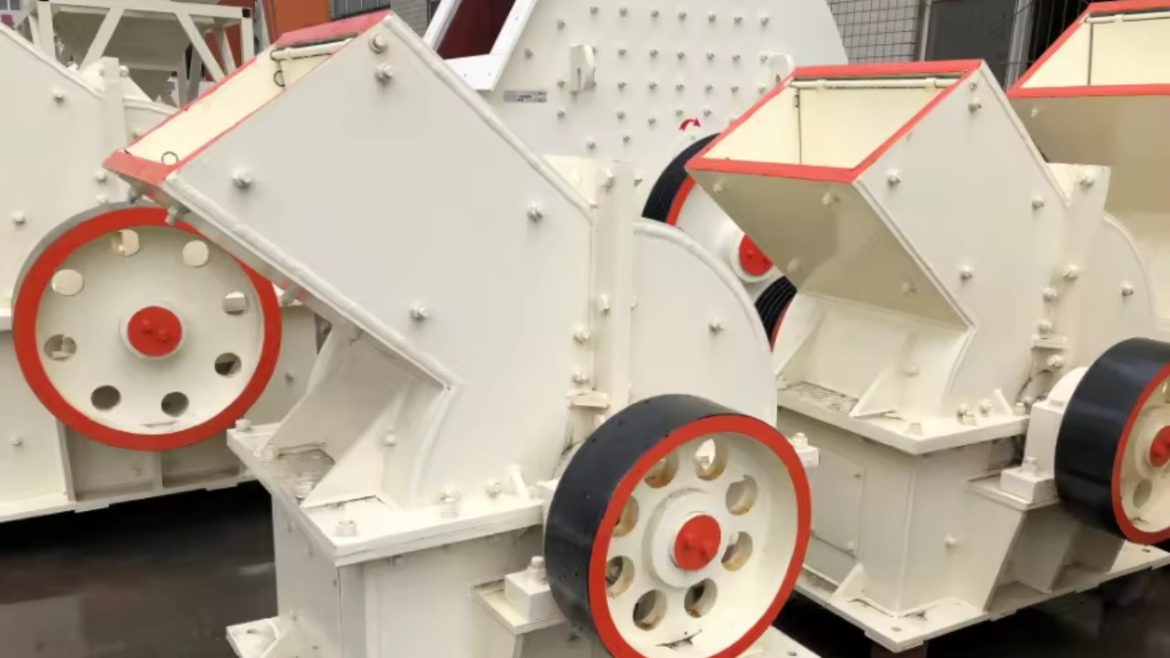Crusher hammers are critical in mining, construction and recycling sectors that are involved in heavy industries, where they are important in cutting down hard materials into small sizes. The working conditions of these machines are very harsh, and the heat and pressure of these machines can easily break ordinary steel components. Engineers use tungsten carbide mulcher teeth for durability, enhancing hammer longevity and crusher hammer performance. The metallurgy of this combination makes sense of why it has been Coincidental in the present-day crushing equipment.
What Makes Tungsten Carbide Special
One of the hardest materials that has been applied in the industries is tungsten carbide. It is a product of tungsten and carbon, a combination which occurs at very high temperatures, and the product is nearly as hard as diamond. It is very hard and thus can withstand any form of weight, even in extreme conditions. Tungsten carbide does not deform to harden, unlike plain steel, when subjected to intense heat. This is quite useful in tools and machinery parts that are subject to great friction or pressure. The crushing edges in a hammer crusher should remain as sharp as possible, and tungsten carbide can help to make sure they do. The hammer can be used with a tungsten carbide mulcher tee, and the teeth are able to last longer before being replaced. This will result in a reduced number of maintenance halts, and machines will have less downtime in the field, which will lead to better productivity and less cost in the long run.
How Tungsten Carbide Mulcher Teeth Improve Hammer Strength
Tungsten carbide mulcher teeth used to make the crusher’s hammers are produced by a procedure known as brazing or hard facing. Here, the tips of the carbides are fixed to a steel base with a powerful bonding material. This forms a tough outer layer that is not easily worn off and a strong inner layer that can withstand heavy impact. The painting is intelligent as it is designed using the most favorable aspects of both materials. The cutting and crushing job is done by the tungsten carbide tips with the steel body absorbing the shock and vibration. Combining them enhances the hammer to be steadier and more dependable during constant usage. What is produced is a tool that does not deteriorate easily, even when cutting hard stones, metal scrap or concrete. It also maintains its shape and equilibrium over a longer time, meaning easier operation and increased efficiency in energy.
Solving Common Wear Problems
The abrasion, impact and corrosion are the three main forms of wear that are commonly experienced on a crusher hammer. Abrasion occurs when the surfaces of the hammer rub against each other and wear off gradually. Impact is the collision of heavy and big objects against the hammer many times, and this may lead to cracks or dents. Corrosion is the chemical decomposition that occurs when the hammer comes in contact with moisture, chemicals or any other substances. Tungsten carbide mulcher teeth are used to reduce all three. Their tough surface makes them abrasion resistant, and their high bonding makes them not to chipping upon collision. They are less prone to corrosion, lasting longer in humid or active environments, and wear less, helping crusher hammers operate effectively longer. This is also conducive to ensuring uniformity in the crushing quality and minimizing instances of replacement of parts.
The Long-Term Value for Equipment Manufacturers
Producers of hammer crushers use tungsten carbide mulcher teeth since they guarantee uniformity and effectiveness. These elements ensure minimization of warranty costs, repair costs and replacement costs. They also assist in reducing vibration in the running of machines, which prevents damage to other internal parts. Economically, it is cost-effective to invest more in carbide-based components, as it will result in superior long-term savings. Although the cost would be more than the typical steel hammers initially, they would be more cost-effective over time due to the longer service life and decreased downtimes. Tungsten carbide has become a common material used by many equipment manufacturers in their OEM (Original Equipment Manufacturer) products since it always works in any industrial environment and meets the performance expectations.
Conclusion
The metallurgy of the hammer used in a crusher is important in determining its strength, wear resistance and durability. The introduction of tungsten carbide mulcher teeth into this design introduces a significant advancement to this design in that it combines hardness and toughness in one instrument. They are very useful in demanding conditions where other types of steel would easily fail due to wear and impact, and remain stable even when exposed to high heat. Tungsten carbide has now become a necessary component of the modern crushing equipment by enhancing the life and performance of the crushing hammers in general. The simplest explanation is that the science of tungsten carbide enables the hammer of the crushers to work harder, longer and perform better, thus making it a good option in industries that use heavy-duty crushing machines.
